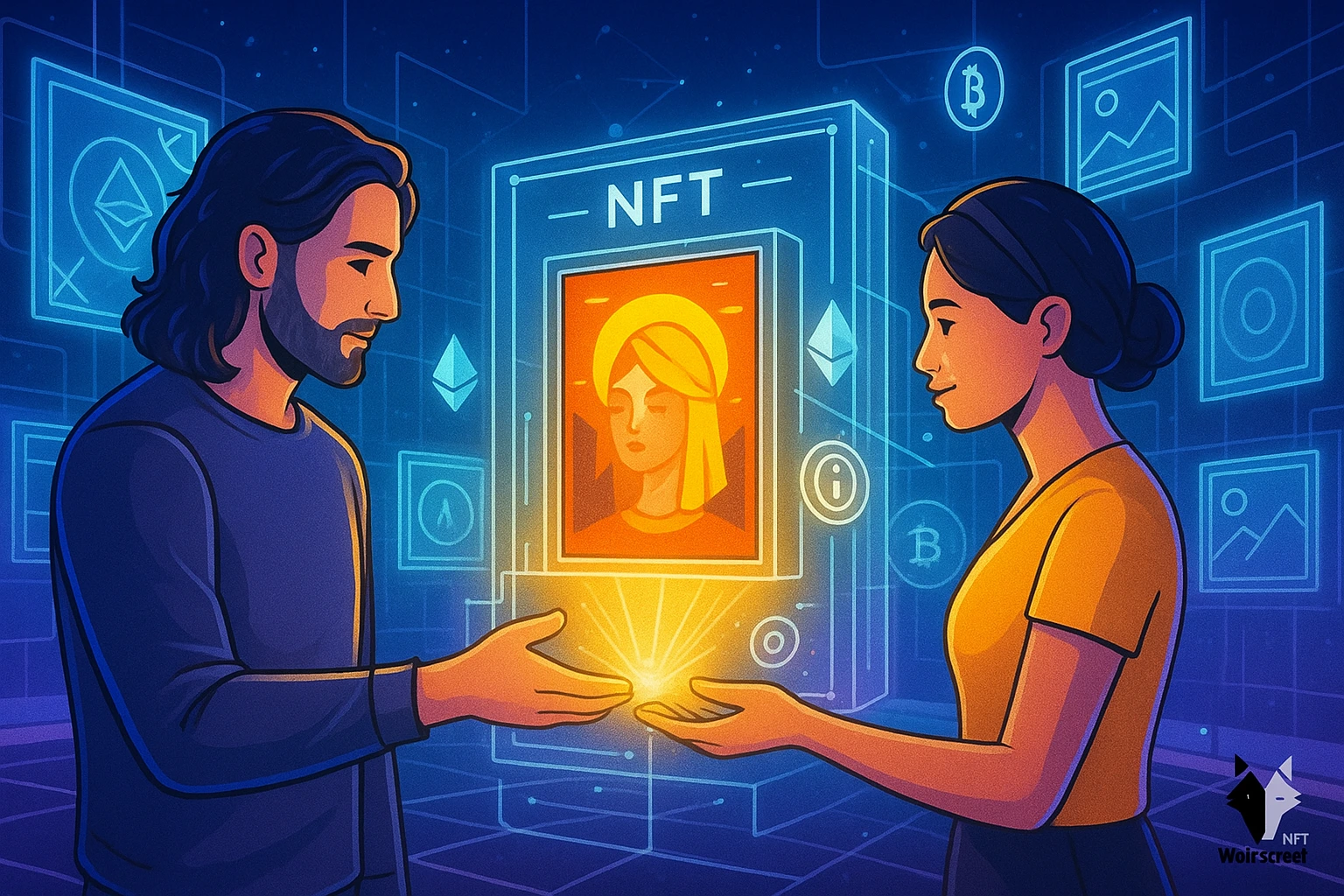For centuries, the art world has been governed by a system of gatekeepers: galleries, auction houses, and elite collectors who determined which artists were seen and how their work was valued. The internet and social media began to democratize exposure, but the fundamental economics of the art market remained largely unchanged.
The rise of Non-Fungible Tokens (NFTs) is now catalyzing a far more profound transformation, creating a new system of digital patronage that empowers artists to connect directly with their collectors, retain ownership of their work, and build sustainable careers on their own terms. This shift is not just changing how art is sold; it is redefining the very relationship between the creator and the collector.
Cutting out the intermediaries and capturing value
In the traditional art world, an artist often receives only a fraction of the final sale price of their work, with the majority going to the gallery or auction house as commission. Furthermore, once a piece is sold, the artist typically sees no further financial benefit, even if that piece is later resold for a hundred times its original price.
NFTs completely upend this model. By minting their work as an NFT on a platform like OpenSea or Foundation, an artist can sell it directly to a global audience of collectors, keeping a much larger percentage of the initial sale price (typically 90% or more).
Even more revolutionary is the ability to program royalties into the NFT’s smart contract. An artist can specify that they will automatically receive a certain percentage (e.g., 10%) of every future secondary sale of that NFT, in perpetuity.
This creates a long-term, passive income stream that is enforced by immutable code, not by legal contracts or collection agencies. It ensures that as an artist’s reputation and the value of their work grows over time, they continue to share in that success. This aligns the interests of the artist and the collector and creates a more equitable and sustainable economic model.
The rise of the digital collector and new forms of art
NFTs have also given rise to a new generation of art collectors. These are often digitally native individuals who are more comfortable owning a piece of verifiable code on the blockchain than a physical painting on their wall. This new collector base has also fueled an explosion in new forms of digital art that were previously difficult to monetize.
Generative art, where an algorithm is used to create unique visual outputs, has become a major category in the NFT space. Artists create the code, and each time the code is run, it generates a unique, one-of-a-kind artwork that is minted as an NFT. This fusion of art and technology is creating a vibrant new creative landscape.
The psychology of digital scarcity and provenance
A key reason for the success of NFTs is their ability to solve two long-standing problems in the digital world: scarcity and provenance. In the past, any digital image could be endlessly copied and pasted, making it impossible to assign value to an “original” digital file. NFTs solve this by using the blockchain to create a unique, non-fungible token that is verifiably scarce. There may be many copies of the image, but there is only one authentic, artist-approved NFT.
Furthermore, the blockchain provides a complete and unchangeable history of an artwork’s ownership. This “provenance” can be traced all the way back to the artist’s original wallet, guaranteeing the authenticity of the piece and eliminating the possibility of forgery.
This verifiable scarcity and provenance creates a sense of confidence and trust in the market, which is crucial for its long-term viability. Understanding the psychological impact of this newfound trust is key to grasping the value proposition of NFTs, a concept that ties into the broader study of Trading Psychology and Risk Management.
The future of art and finance
The convergence of art and finance in the NFT space is creating new opportunities and challenges. As NFTs become recognized as a legitimate alternative asset class, sophisticated financial tools are being built around them. This includes platforms for fractionalizing high-value NFTs (allowing multiple people to own a share of a single artwork), using NFTs as collateral for decentralized loans, and building index funds of different NFT collections.
This financialization of the art market requires a new level of sophistication from both artists and collectors. Artists need to understand the basics of tokenomics and community management, while collectors need to be able to assess the long-term value of a digital asset. Platforms that provide robust and secure infrastructure for managing a diverse portfolio of assets, including both liquid cryptocurrencies and less liquid NFTs, are becoming essential. The ability to manage different account types within a single, integrated platform allows collectors to build a holistic digital asset strategy, blending their passion for art with sound financial management.
I am Normand Burgos, a content creator who specializes on blockchain technology. I am 44 years old and have been married for 10 years to my beautiful wife and we have two kids, a boy and a girl.
I love spending time with my family and friends, going out to eat, watching movies, playing video games, and of course learning about new technologies. I have worked in various industries throughout my career but find myself most passionate about blockchain technology because of its potential to change the world as we know it.


